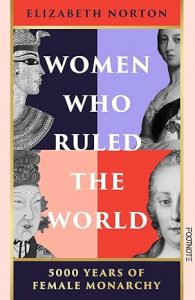In April I visited Sudeley Castle. Lady Jane lived here for several months in the summer/autumn of 1548 and the church in the castle grounds, was the location of her first public role.
Elizabeth Norton writes that, ‘The castle was visible for miles from the high London road, lying in a wooded valley close to the town of Winchcombe in Gloucestershire.’ (1)
History
When Edward IV became King in 1461, the castle was owned by Ralph Boteler. As a Lancastrian supporter, he was forced to sell to Edward IV, who then granted the castle to his brother, Richard Duke of Gloucester. After nine years of ownership, Richard swapped it for another castle. With his succession to the throne, Richard became owner again and ‘set about transforming it into a home fit for a king,’ including ‘a magnificent banqueting hall.’ (2) After Richard III’s defeat at the Battle of Bosworth in August 1485, the castle became the property of Henry VII, who granted it to his uncle, Jasper Tudor. After Jasper’s death it reverted to the crown and was owned by Henry VII and Henry VIII. King Henry and Queen Anne Boleyn spent a week at Sudeley in July 1535.
On the succession of Edward VI, his uncle Thomas Seymour was given Sudeley Castle and the title of ‘Baron of Sudeley).(3) Seymour married Henry VIII’s widow, Queen Katherine Parr in 1547. Katherine and Thomas moved to the castle in June 1548 to await the birth of their child. With them, also went Lady Jane Grey (who was Seymour’s ward). Katherine died at the castle, several days after giving birth to a daughter. After Thomas Seymour’s execution in March 1549, the property was given to Katherine Parr’s brother but on Mary I’s succession to the throne, it again reverted to the crown.
Lady Jane
Lady Jane accompanied Katherine Parr and Thomas Seymour to Sudeley Castle in June 1548. Elizabeth Norton writes, ‘the castle that greeted Thomas and Catherine was…a Cotswold stone building, set amid pretty parkland and ornate gardens.'(4) While they waited for the birth of Katherine’s first child, Jane and the Queen dowager, attended daily services at the church situated in the grounds of the castle. Katherine gave birth to a baby girl, whom she named Mary (in honour of her step-daughter, Mary Tudor) but ‘a few days later Katherine became suddenly feverish with what may have been puerperal fever.’ (5)
Leanda de Lisle writes ‘as it became clear she (Katherine) was dying, Jane and the other women read the Scriptures with her.’ (6) Katherine died on 5th September and 2 days later was buried in St Mary’s Church, where she had worshipped with Lady Jane. Jane acted as chief mourner and de Lisle describes how ‘the eleven-year-old Jane performed her first public role with great dignity. She walked behind the Queen’s coffin in the procession from the house to the chapel at Sudeley, her small figure erect in a black gown, the long train ‘borne up by a young lady.’ (7)

(c) Jennie Rainsford
Lady Jane Grey mourns Katherine Parr
Re-enactment of Katherine Parr’s funeral at Sudeley Castle 2010
The Castle
The castle has a number of displays including Katherine Parr, Roman, Richard III and World War One exhibitions. In Room 18 there is a display about Henry VIII and his six wives, including costumes from the David Starkey tv series. The Textile Room [Room 19] includes the ‘Anne Boleyn lace canopy’ which is said to have been worked on by Anne Boleyn and her ladies for the christening of Princess Elizabeth.
In Rooms 21 (Tudor Room) and 23 (Tudor Document Room) there are the following:
Figures of Katherine Parr, Thomas Seymour and Lady Jane Grey.
Tooth and locks of hair belonging to Katherine Parr.
Katherine Parr’s ‘Prayers or Meditations’
Katherine Parr’s ‘Lamentations of a Sinner’
Katherine Parr’s personal copy of the ‘1542 English translation of ‘A Sermon of St Chrysostome’ by the Oxford scholar John Lupset…bearing her signature, ‘Kateryn the Quene, KP’ on the title page.’ (8)
Love letter accepting Thomas Seymour’s proposal
Verses written by Thomas Seymour
14th/15th century Bohun Book of Hours
In Screening Room 2 [Room 28] you can watch a film about Lady Jane.
Two rooms that were used by Katherine Parr [37] ‘Katherine Parr’s Ante-Room and [38] Katherine Parr’s Privy’ are also open to the public.
In the South Hall [29], there are:
A copy of the NPG Master John portrait of Katherine Parr
Portrait of Mary Tudor, Duchess of Suffolk by Joannes Corvus
At the top of the stairs is the Queen Elizabeth window
You leave the South Hall via a door that was closed off for centuries and was opened for the 2012 Katherine Parr festival. ‘This hidden, secret door led from Katherine Parr’s private apartments to the covered walkway along which she and Lady Jane walked daily to their prayers in the Church.’ (9)
So, as I left the Castle, I was literally following in the footsteps of Lady Jane. So I walked through the door a couple of times!
The covered walkway that Katherine and Jane used to reach the church, no longer exists. Instead the path through the ‘White Garden’ is marked by a series of arches and Katherine and Jane ‘are represented by two topiary figures.’ (10)
St Mary’s Church
St Mary’s Church in the grounds of the castle, was built in the 15th century. It was here that the first Protestant funeral service was held, for the burial of Katherine Parr on 7th September 1548.
Linda Porter writes ‘two hundred years rolled over England. Through civil war, changing dynasties and the beginnings of empire, Katherine Parr rested in her tomb at Sudeley. The castle eventually passed into the hands of the Chandos family, staunch royalists, and suffered accordingly when the civil war ended. Left unfortifiable, it was abandoned and fell into ruin. The chapel was also neglected and the burial place of Katherine Parr forgotten…’ (11)
Porter describes how, after the publication of a guide to the history of Gloucestershire in 1792, a group of visitors discovered Katherine’s tomb and viewed her remains. Today Katherine lies in a Victorian marble tomb.
The inscription of Katherine’s original coffin:
‘Here lyeth Queen Katheryne Wife to Kinge
Henry the VIII and
The wife of Thomas
Lord of Sudeley high
Admy…of England
And ynkle to Kyng
Edward the VI’ (12)
Katherine is also commemorated in a stained glass window, which also shows two of her husbands, Henry VIII and Thomas Seymour.
Lady Jane is also represented in a stained glass window.
Banqueting Hall and Queens’ Garden
Sources
1. Norton, E. (2015) The Temptation of Elizabeth Tudor, Head of Zeus, p.152.
2. A Story of Kings and Queens & A Guide to Sudeley Castle and Gardens, Sudeley Castle, p.13
3. Ibid, p.15
4. Norton, E. (2015) The Temptation of Elizabeth Tudor, Head of Zeus, p.154.
5. Borman, T. (2016) The Private Lives of the Tudors: Uncovering the Secrets of Britain’s Greatest Dynasty, Hodder & Stoughton, p.232.
6. De Lisle, L. (2010) The Sisters Who Would Be Queen: The Tragedy of Mary, Katherine and Lady Jane Grey, HarperPress, p.43.
7. Ibid.
8. Porter, L. (2011) Katherine the Queen: The Remarkable Life of Katherine Parr, Macmillan, p.157.
9. Queen of England Katherine Parr: Mistress of Sudeley, Sudeley Castle, p.27.
10. A Story of Kings and Queens & A Guide to Sudeley Castle and Gardens, Sudeley Castle, p.73
11. Porter, L. (2011) Katherine the Queen: The Remarkable Life of Katherine Parr, Macmillan, p.343.
12. Queen of England Katherine Parr: Mistress of Sudeley, Sudeley Castle, p.41.


























































